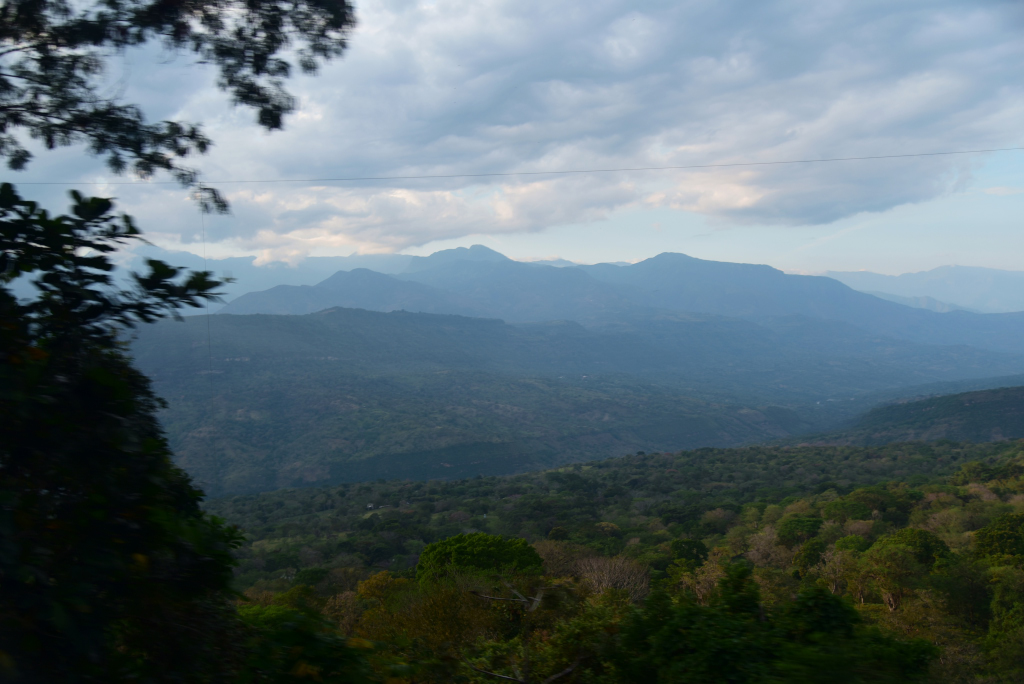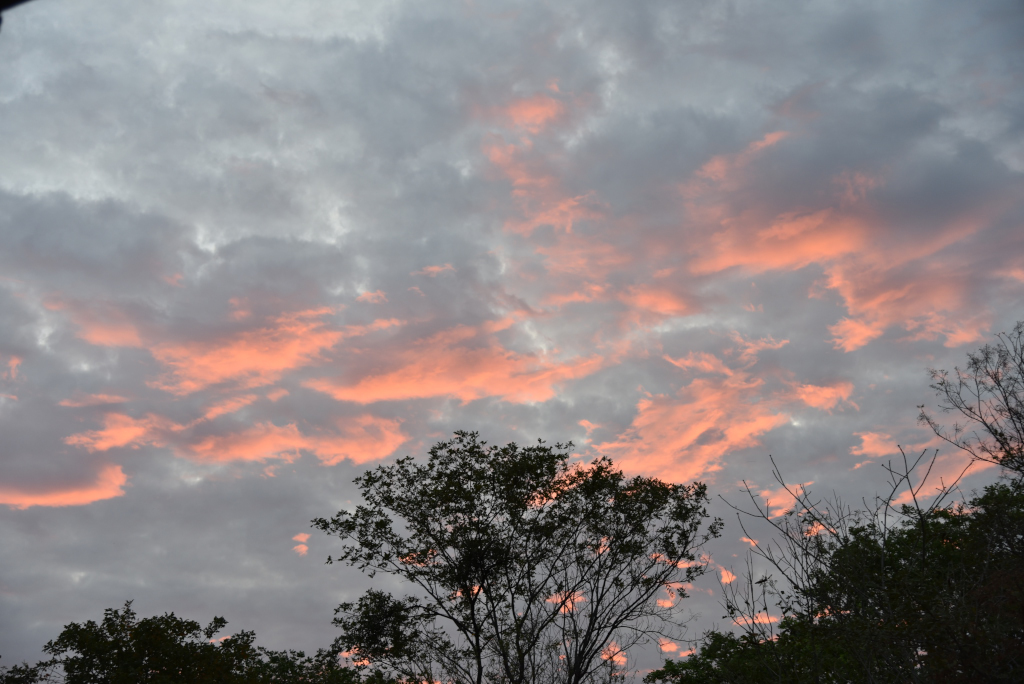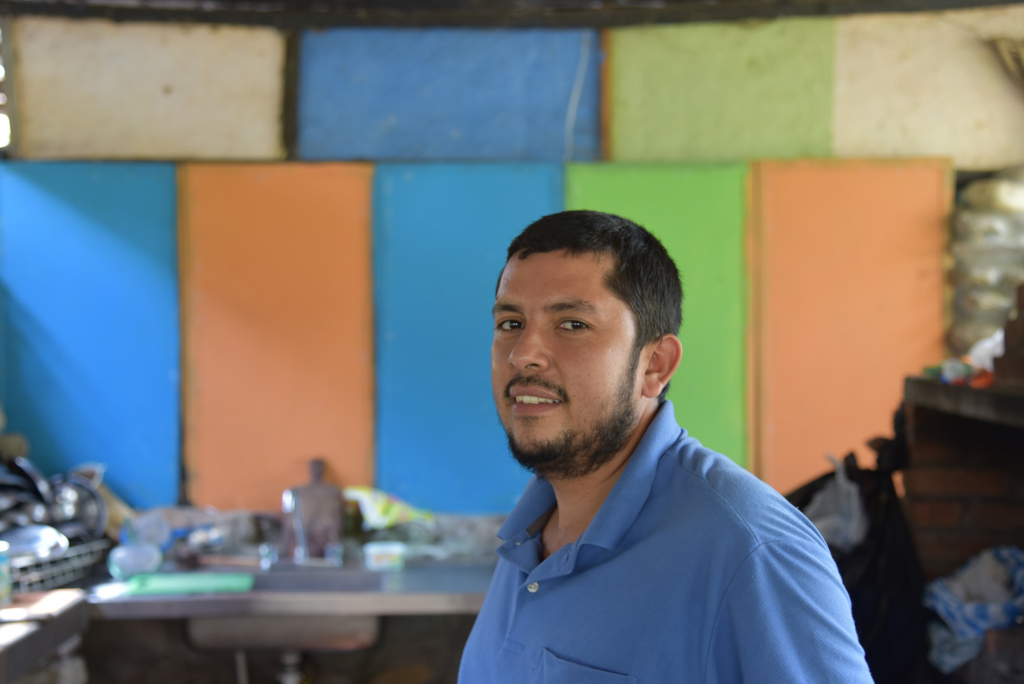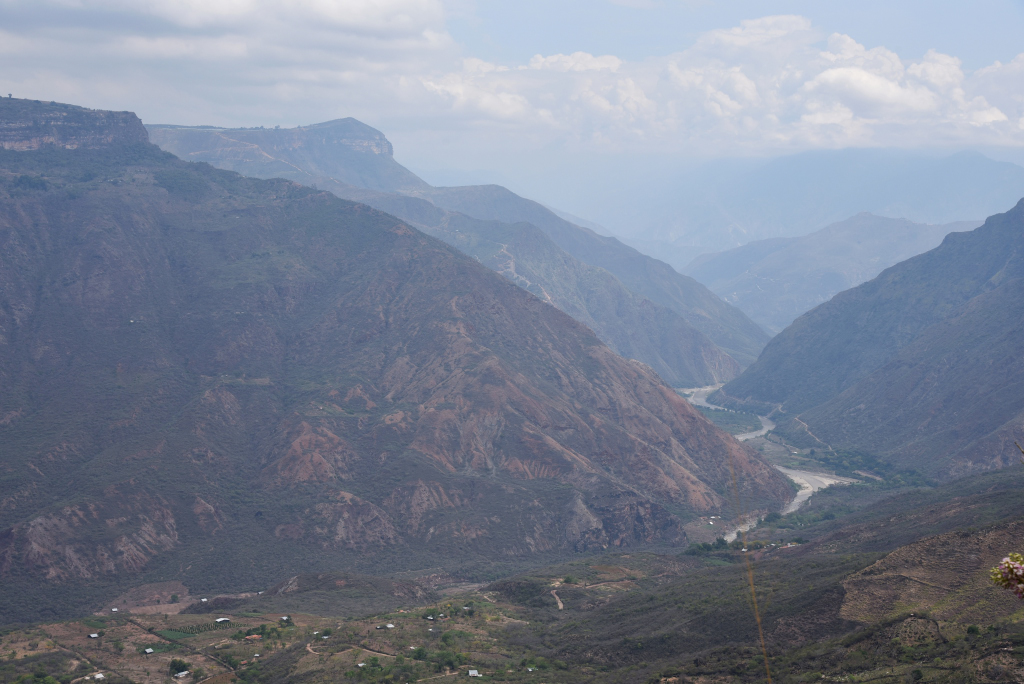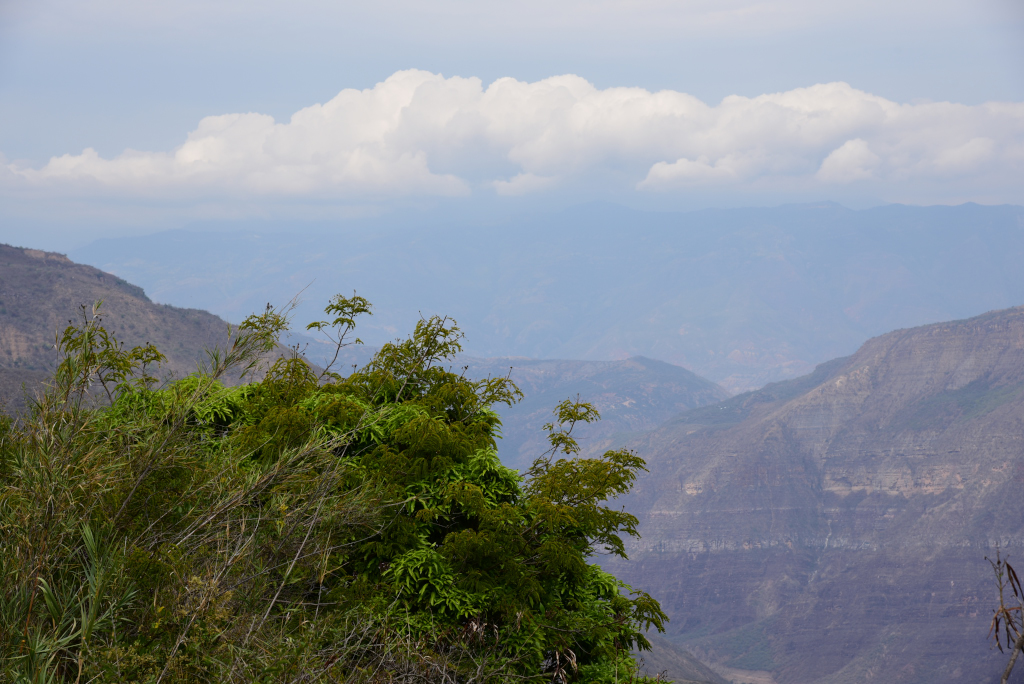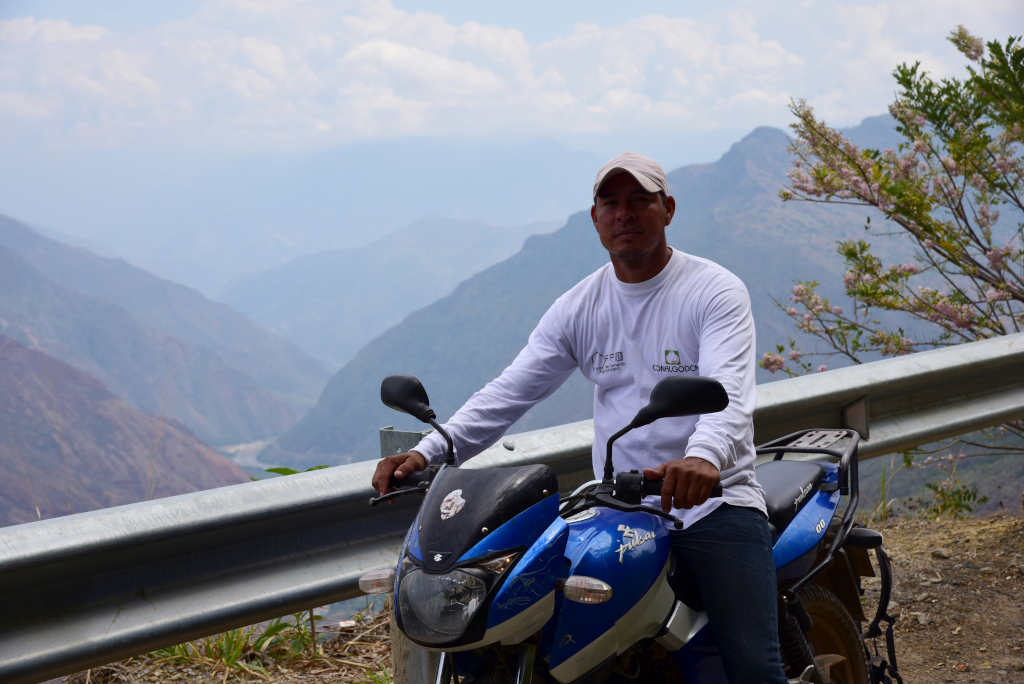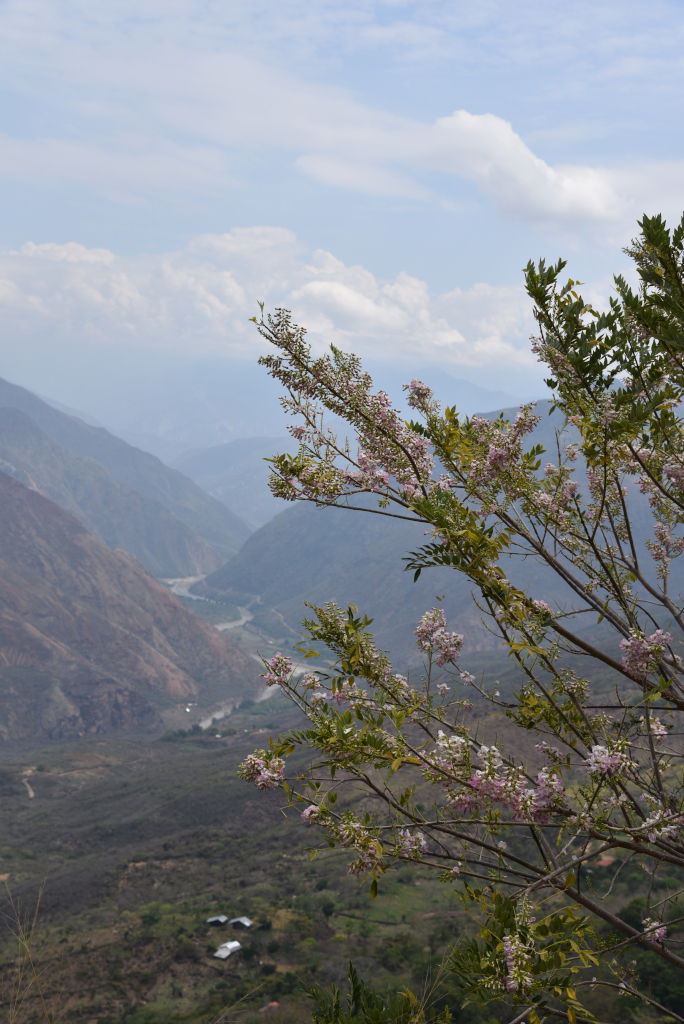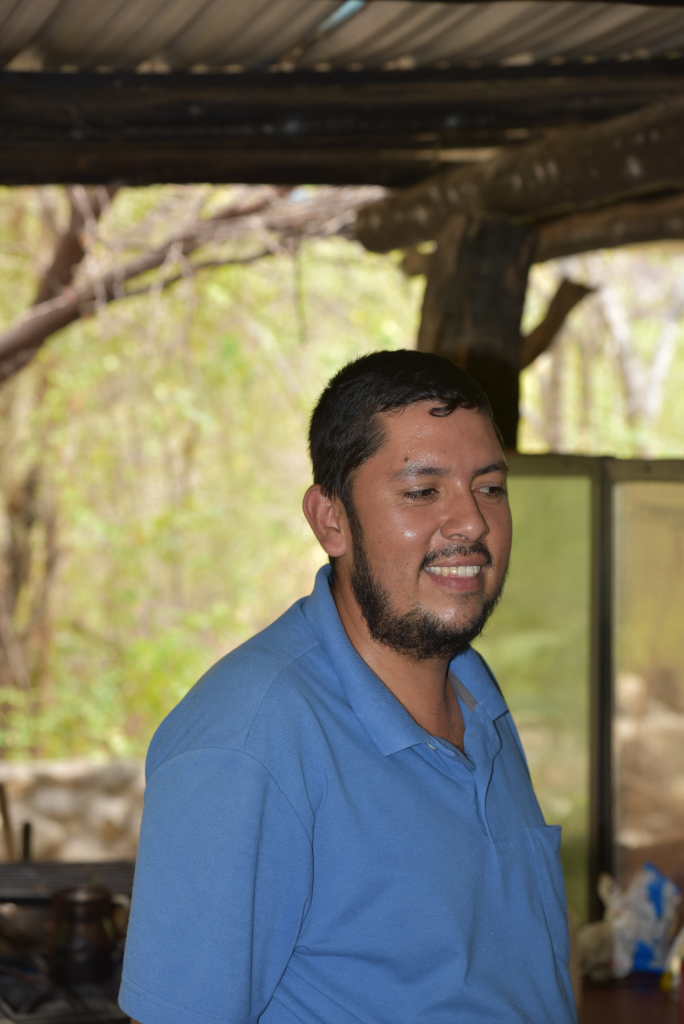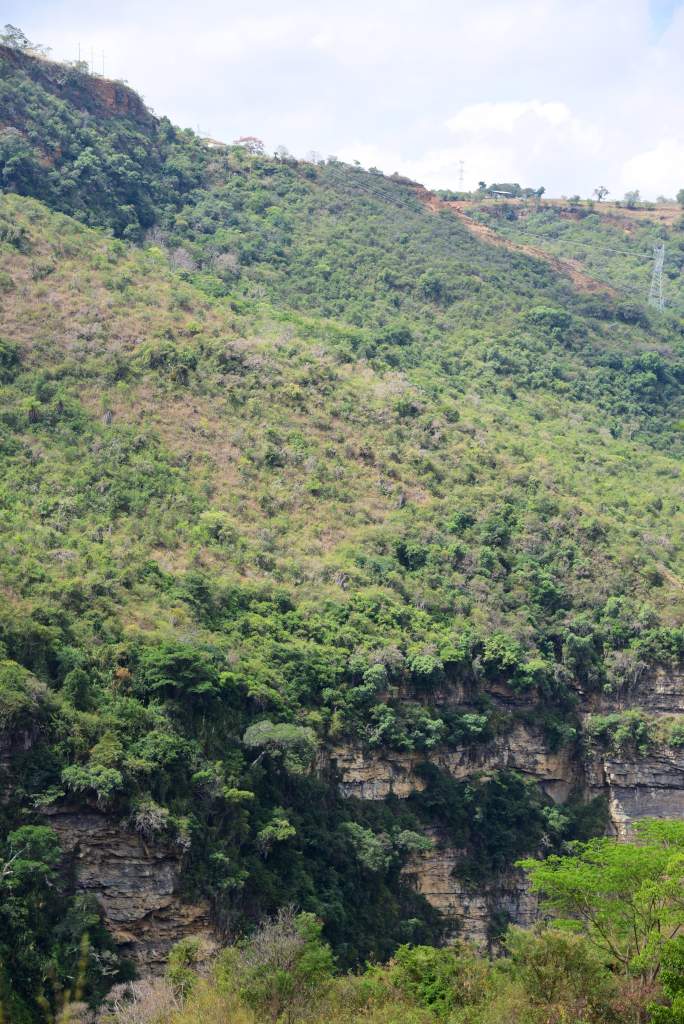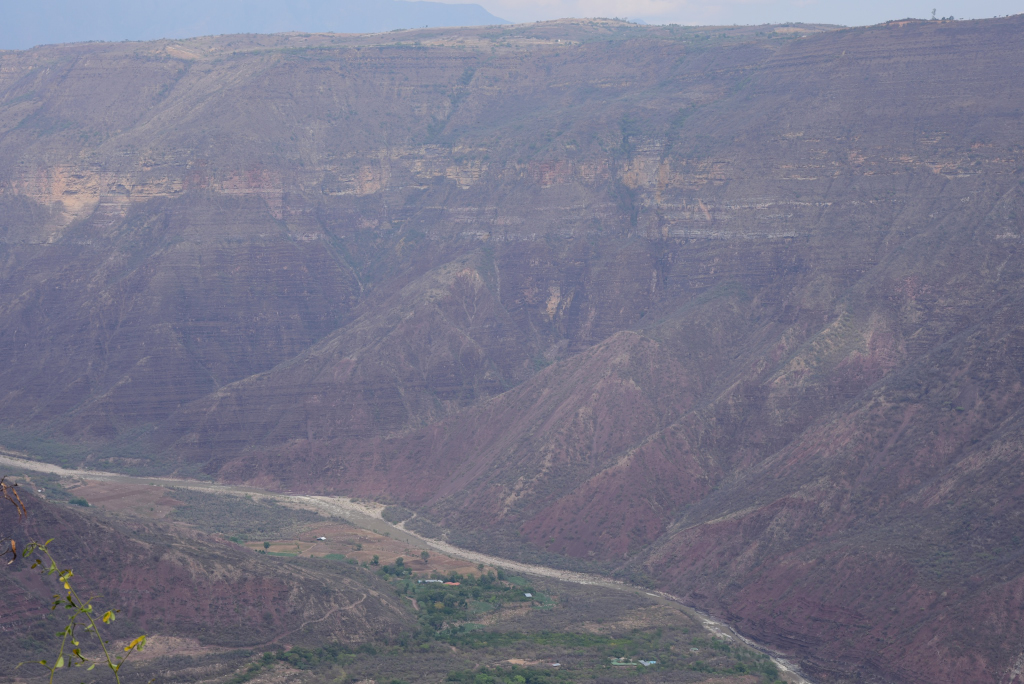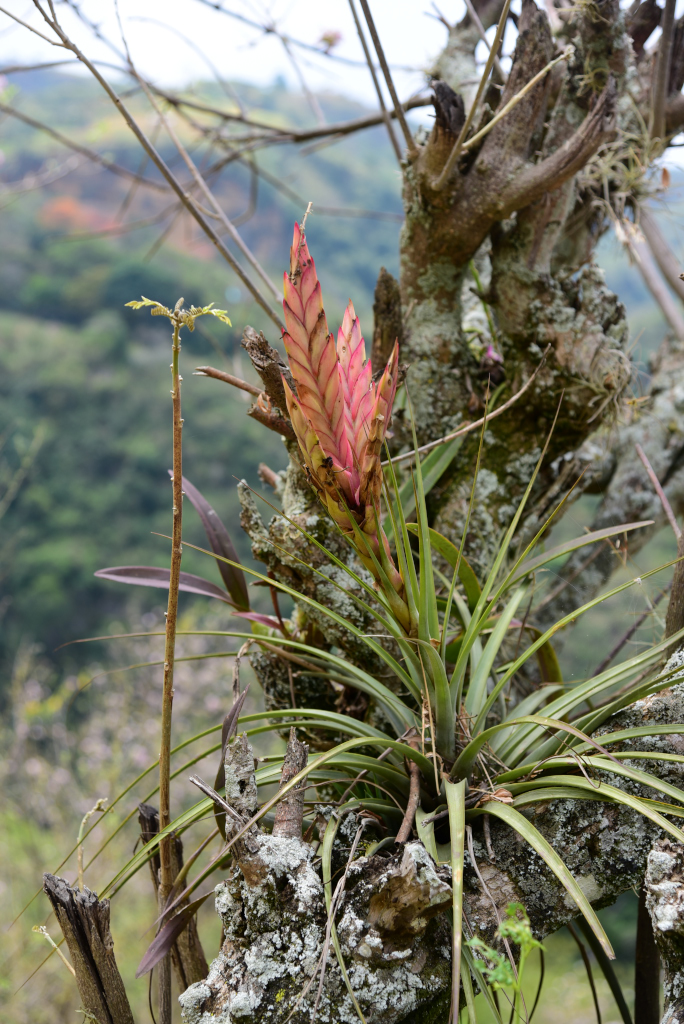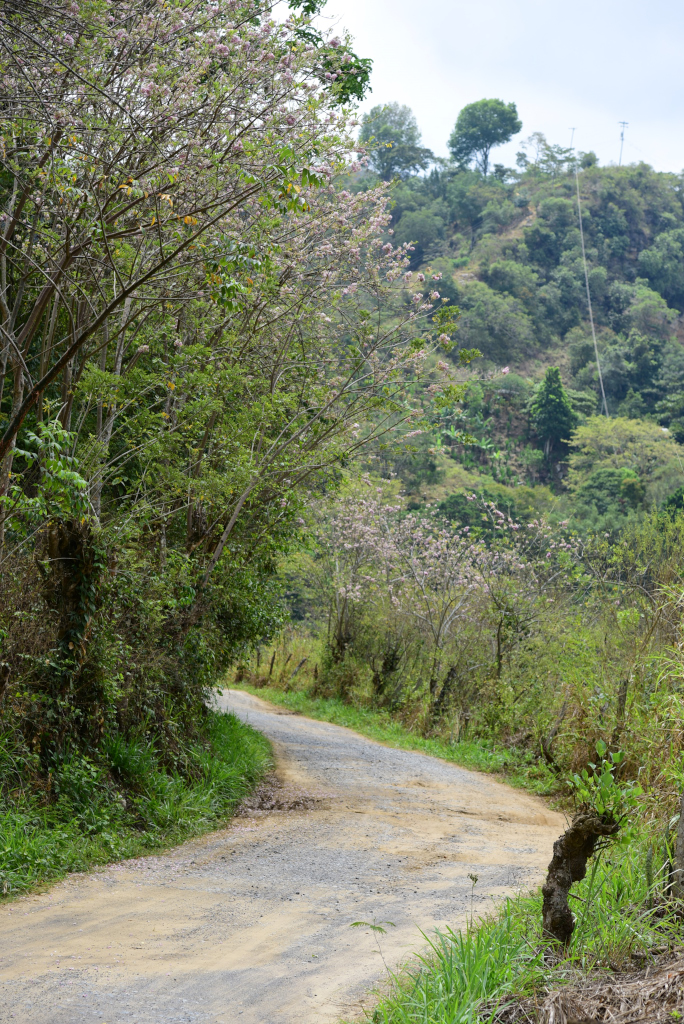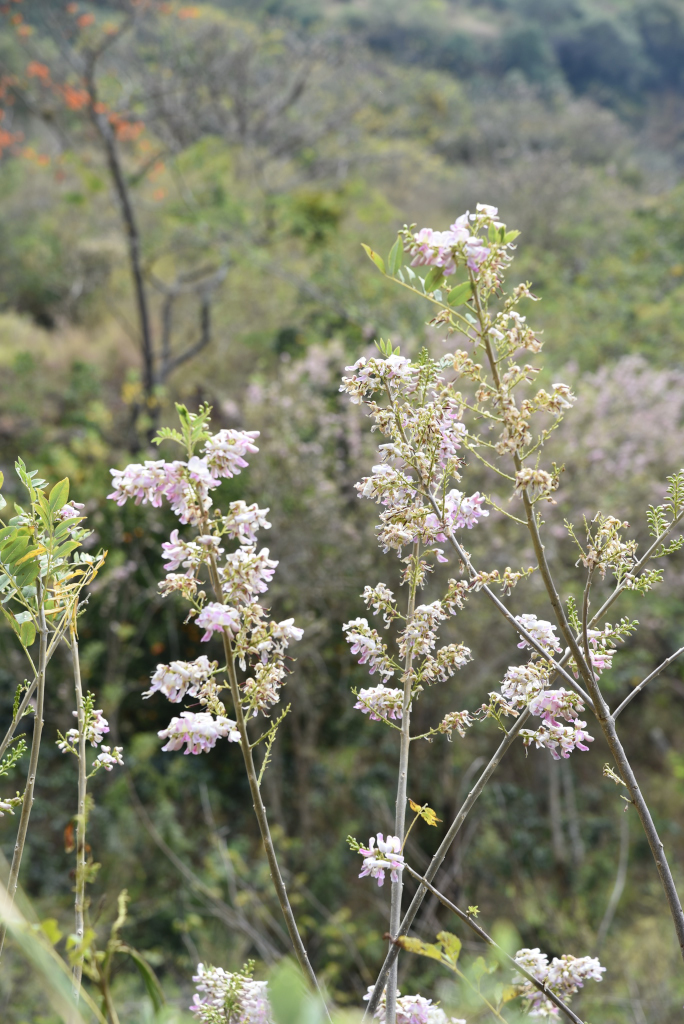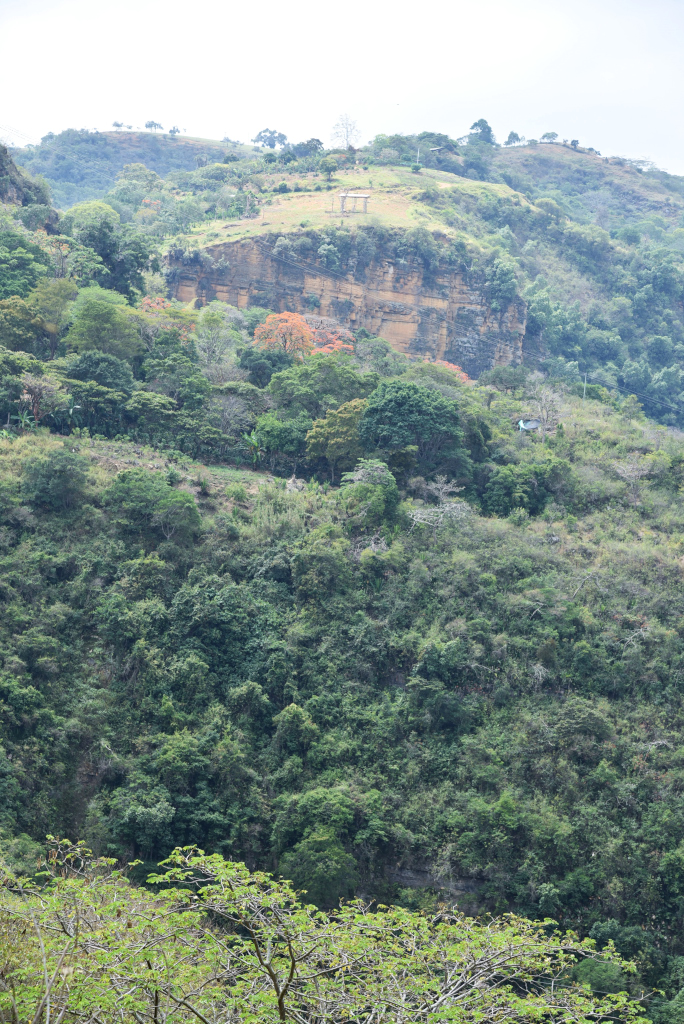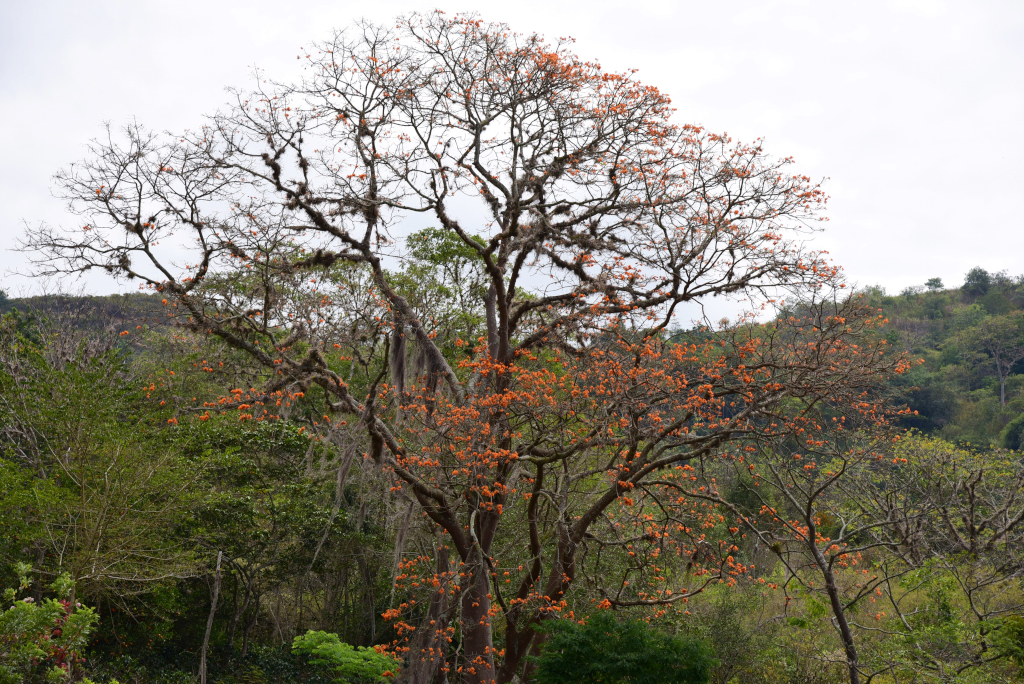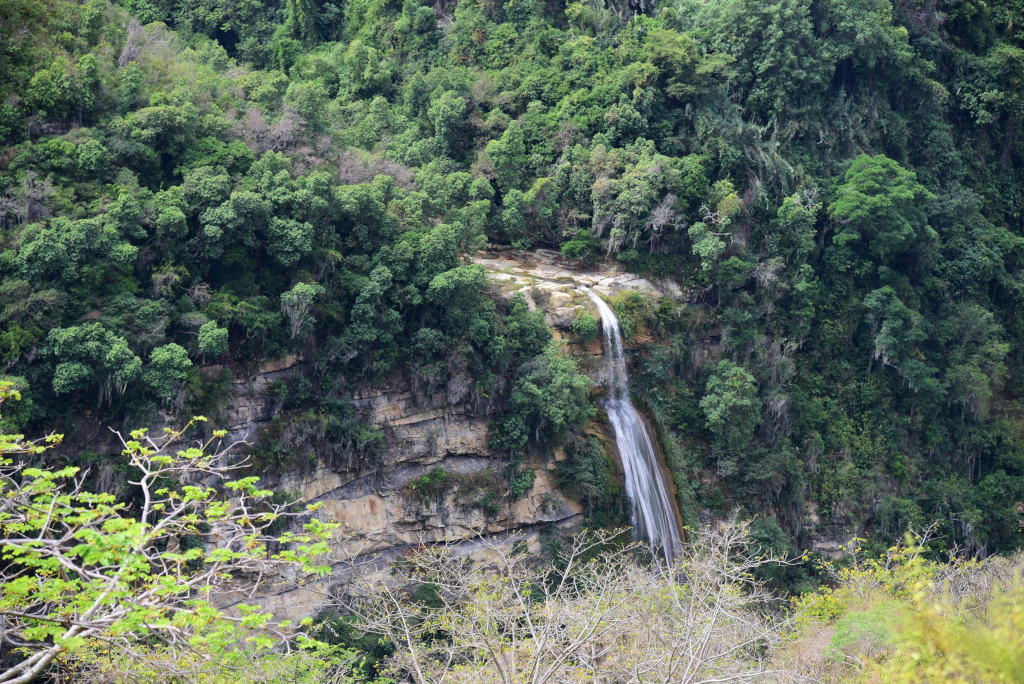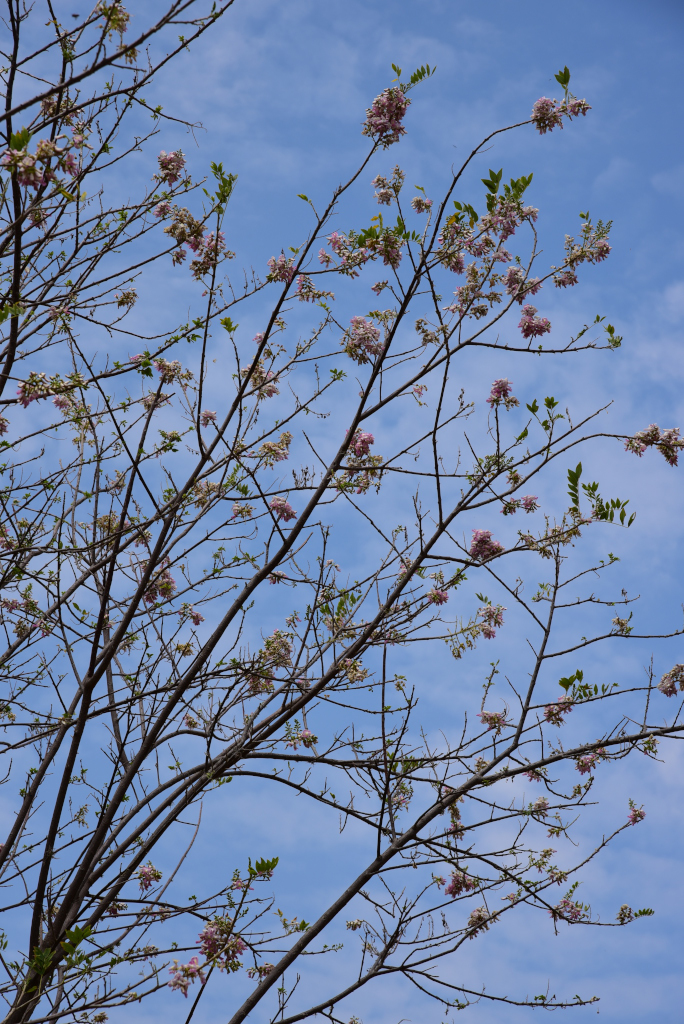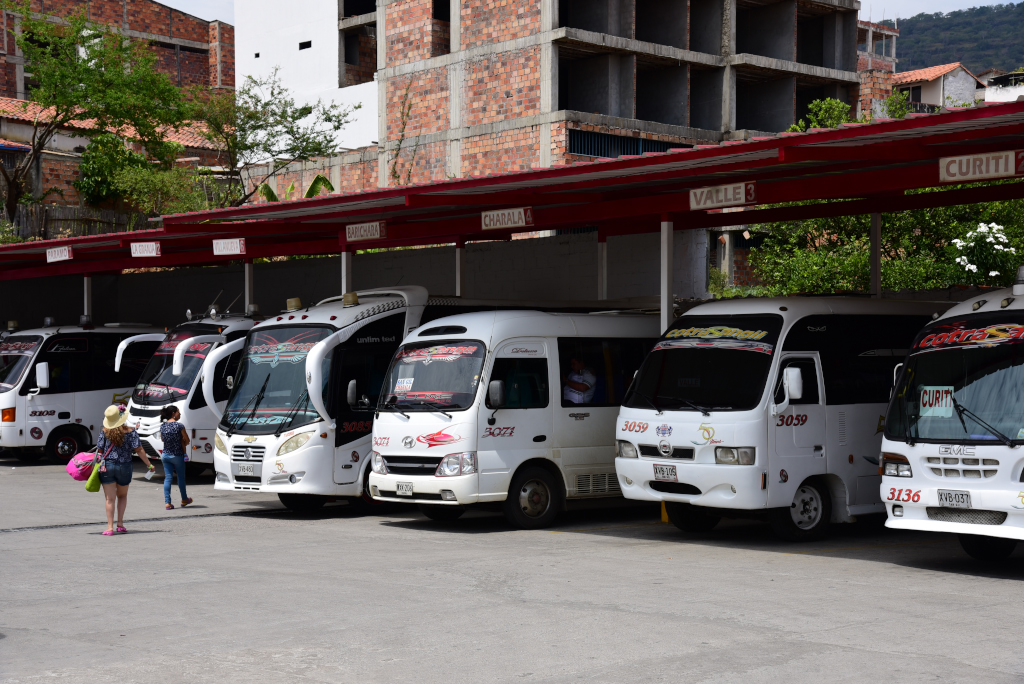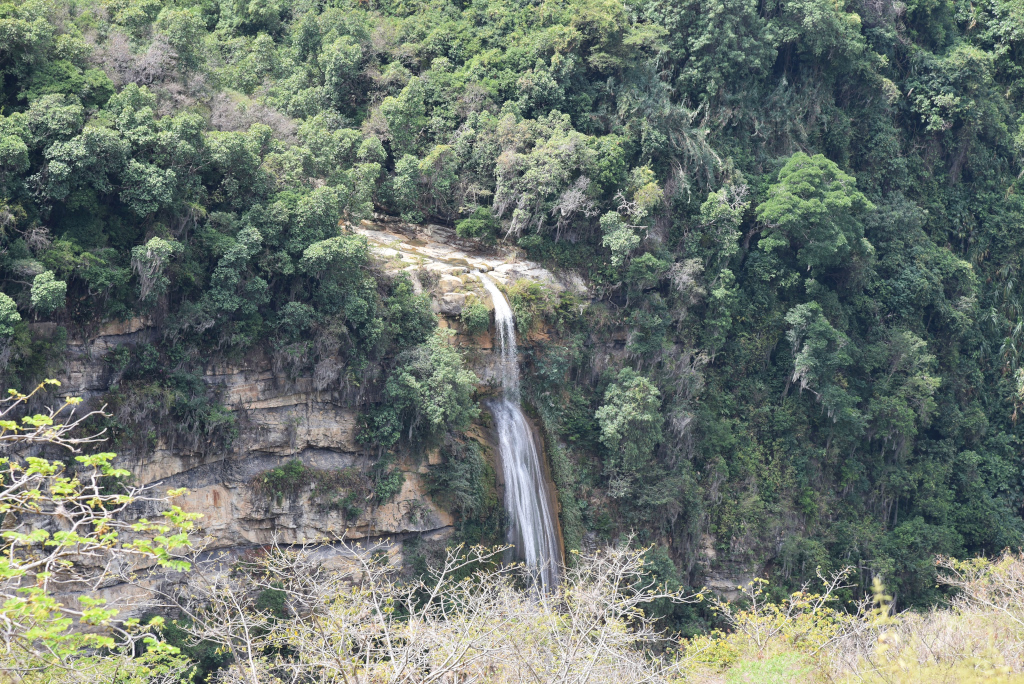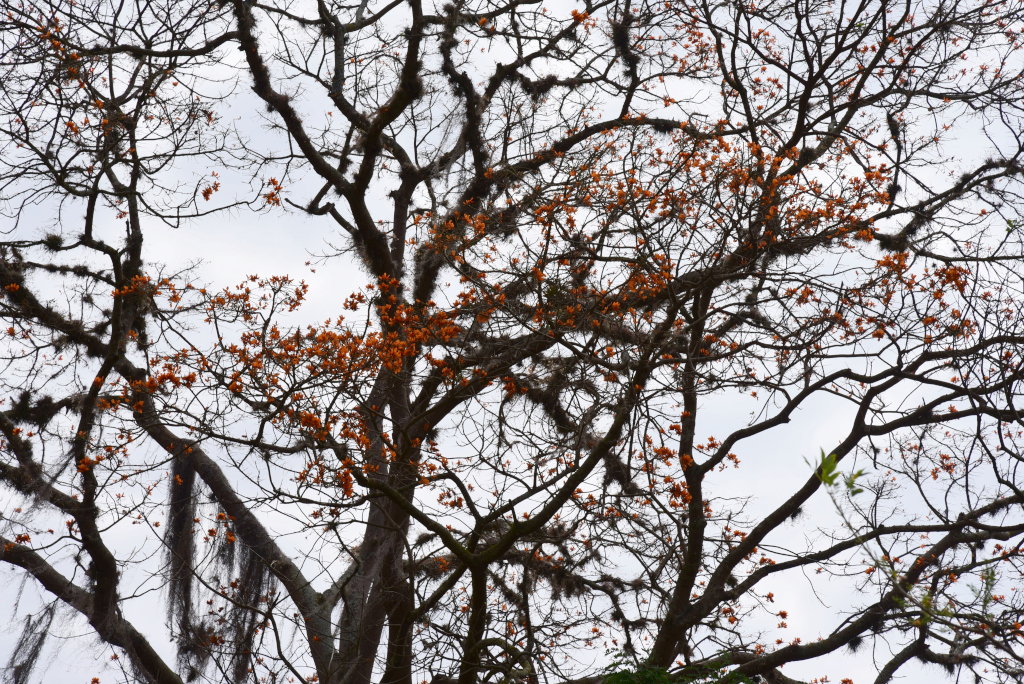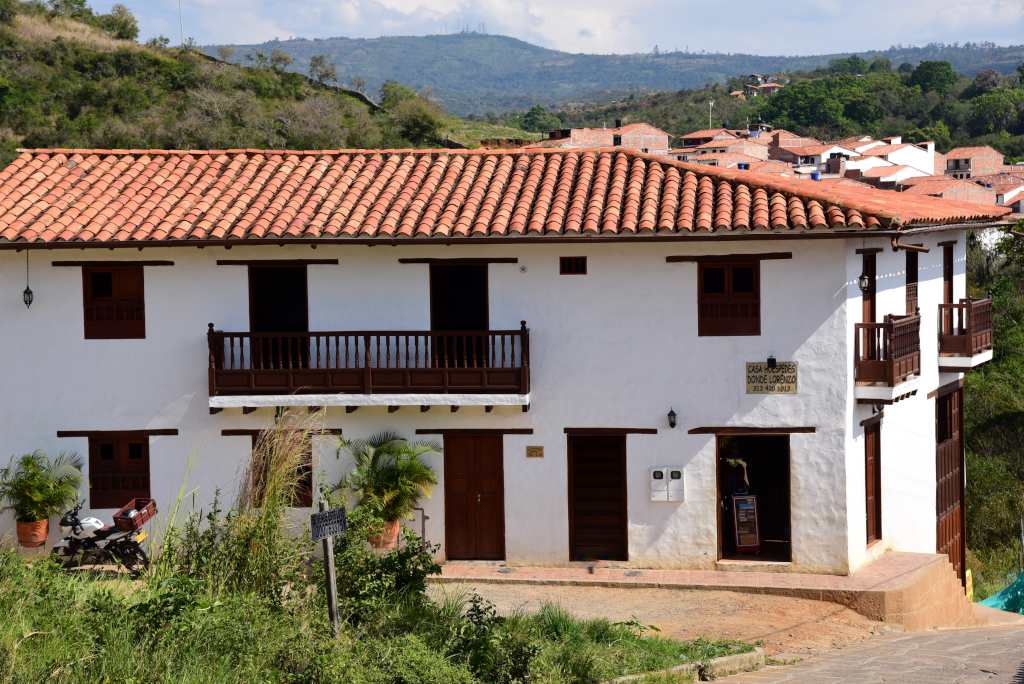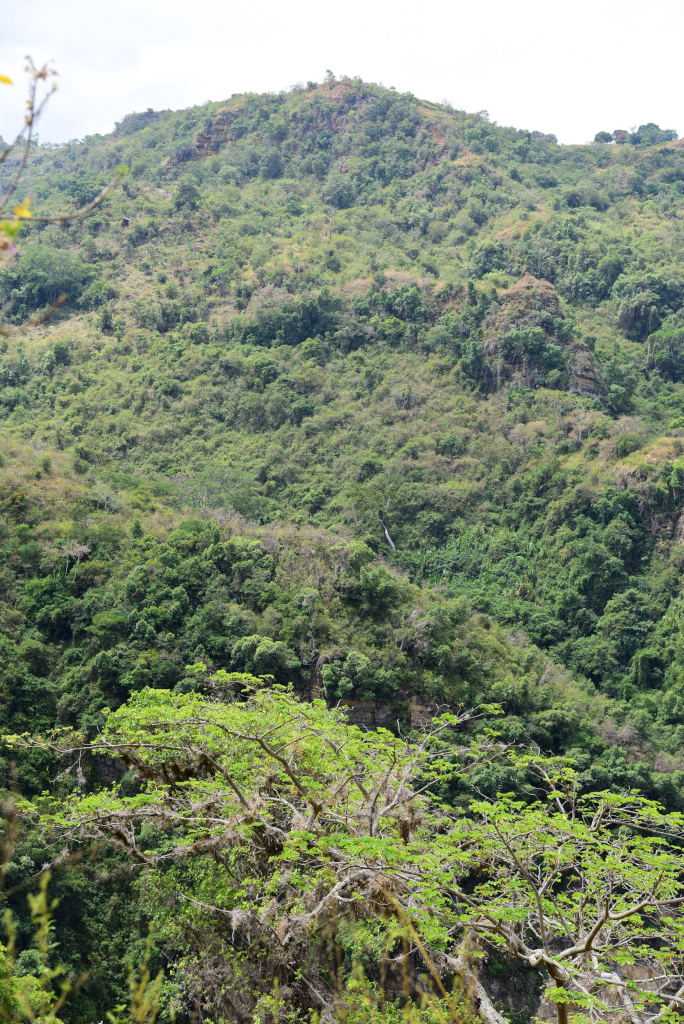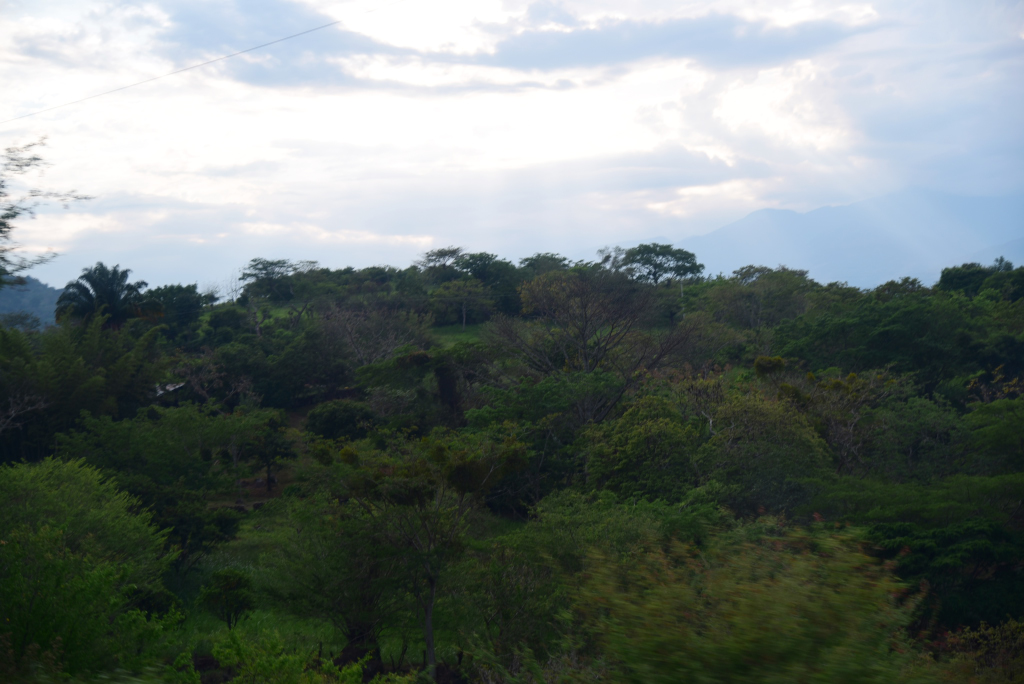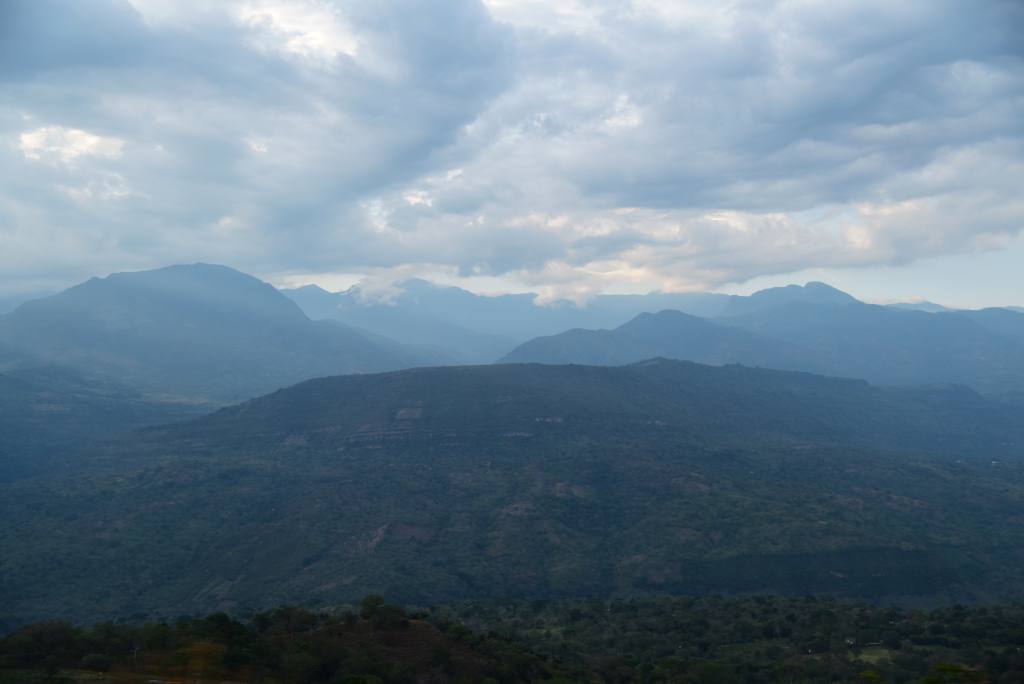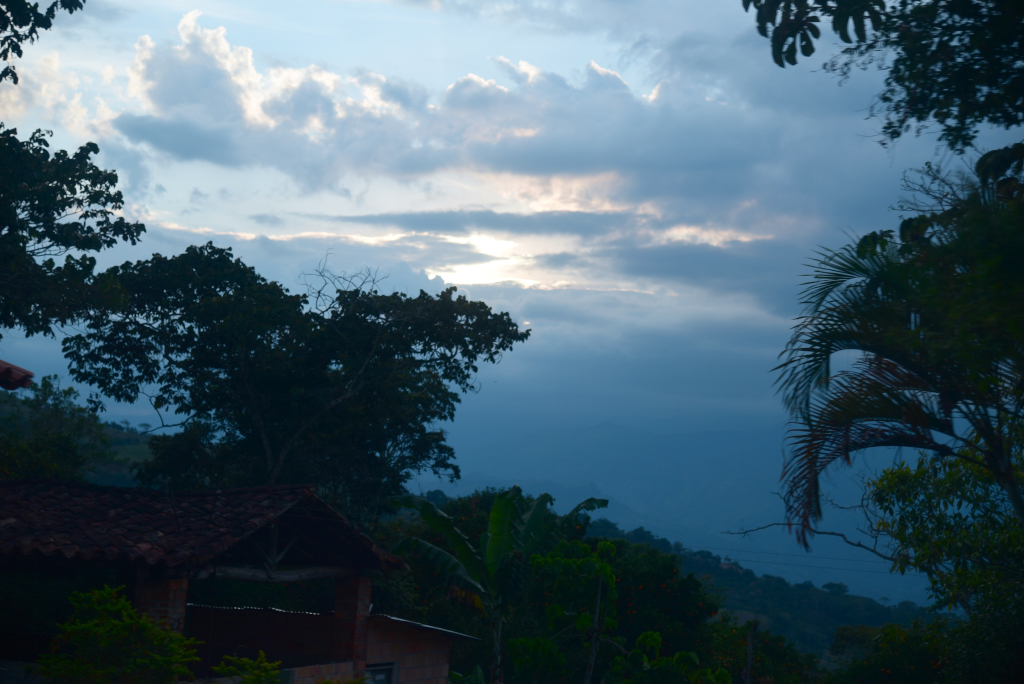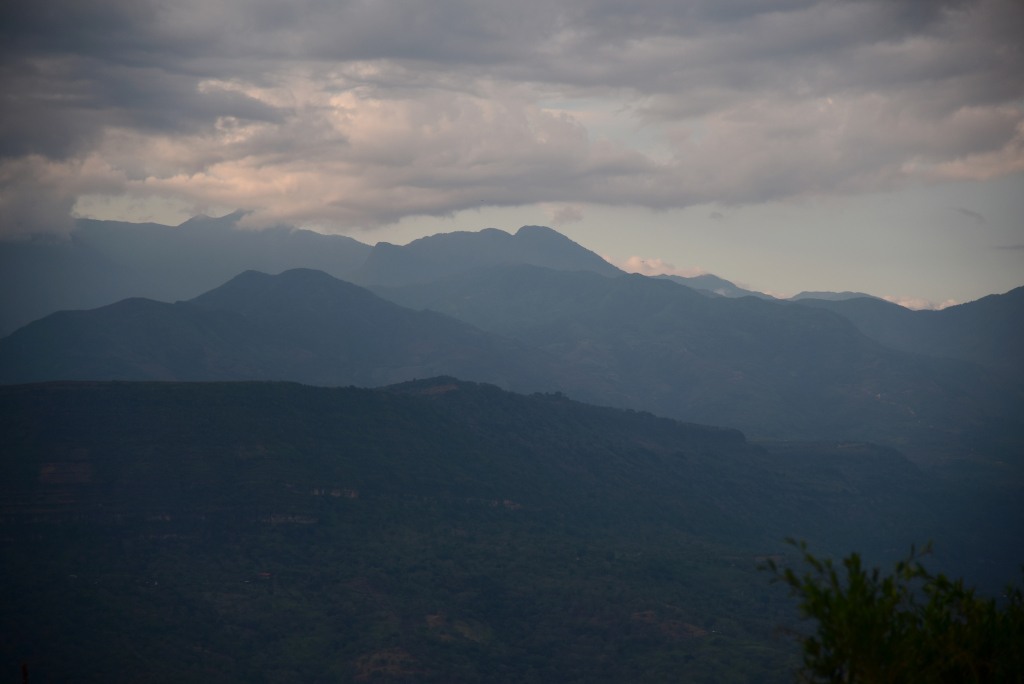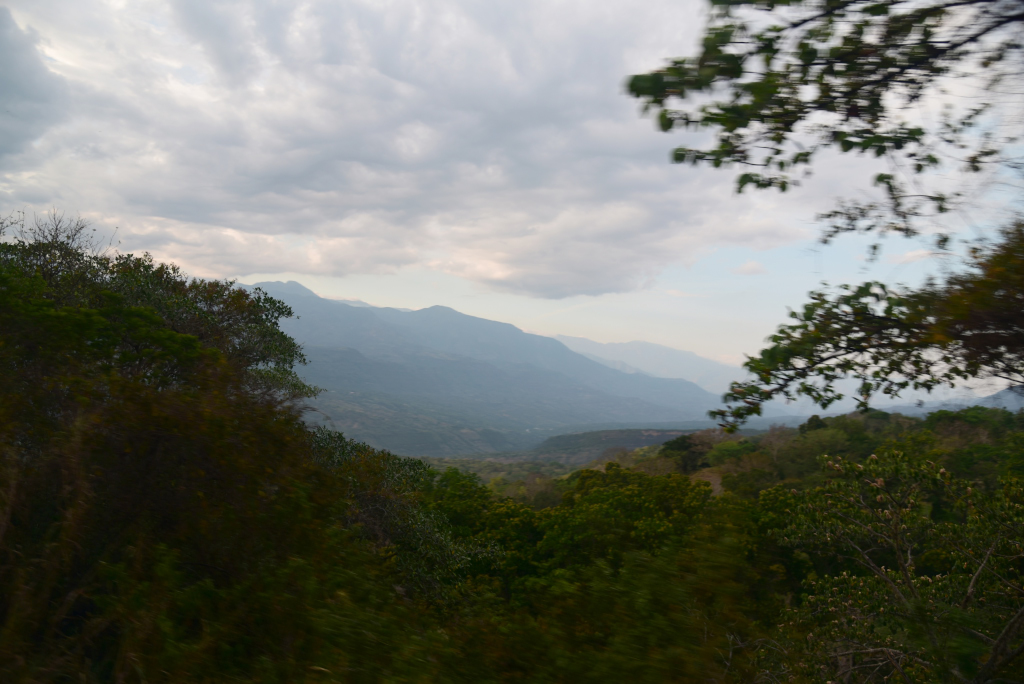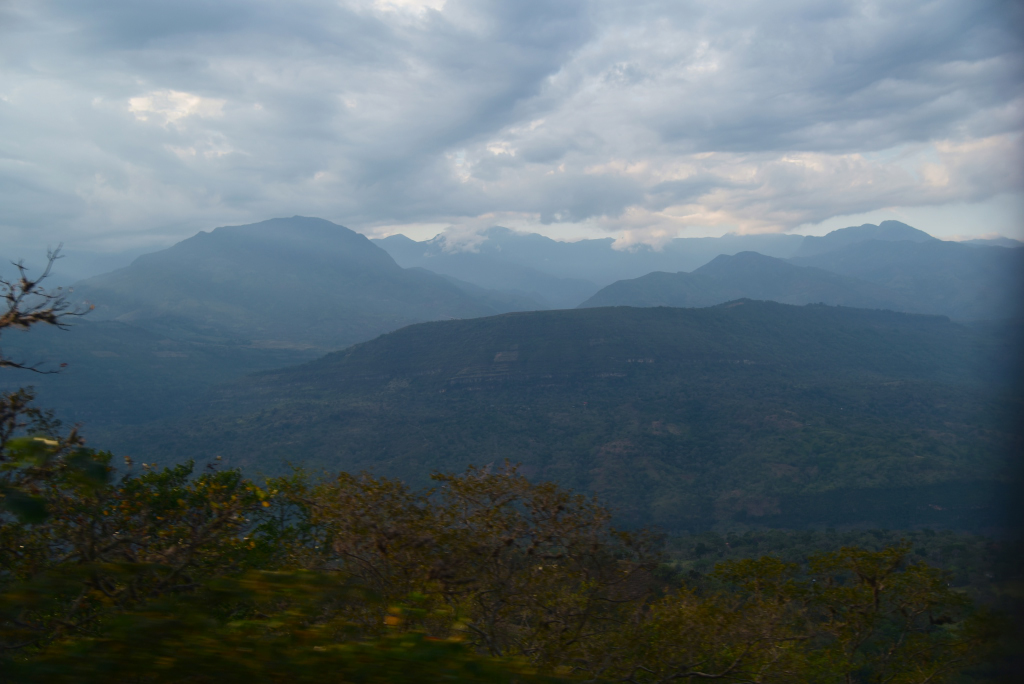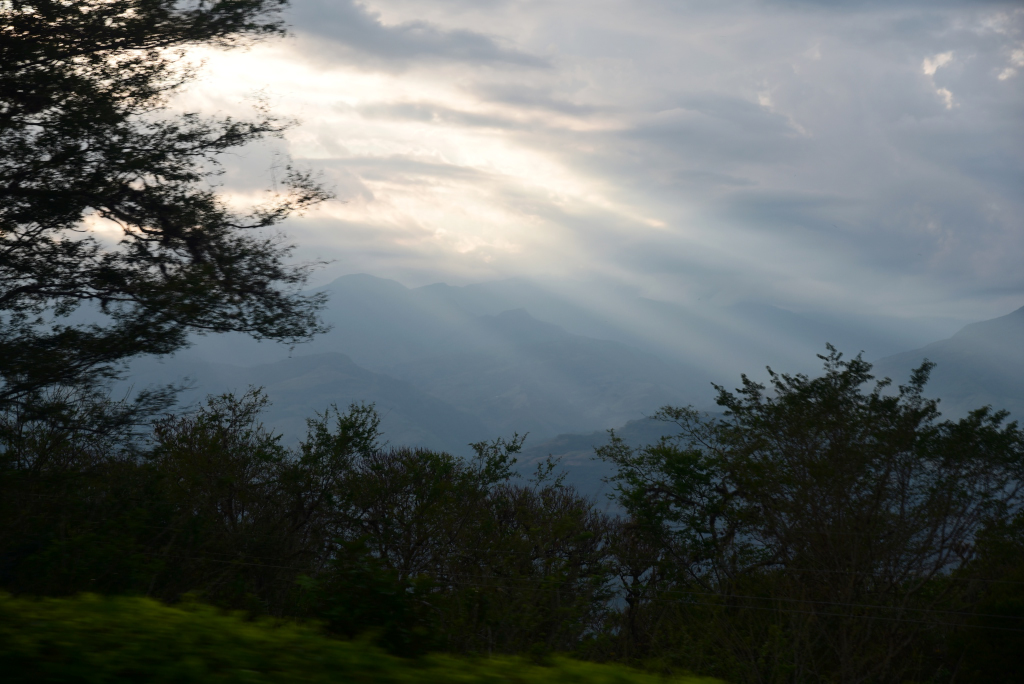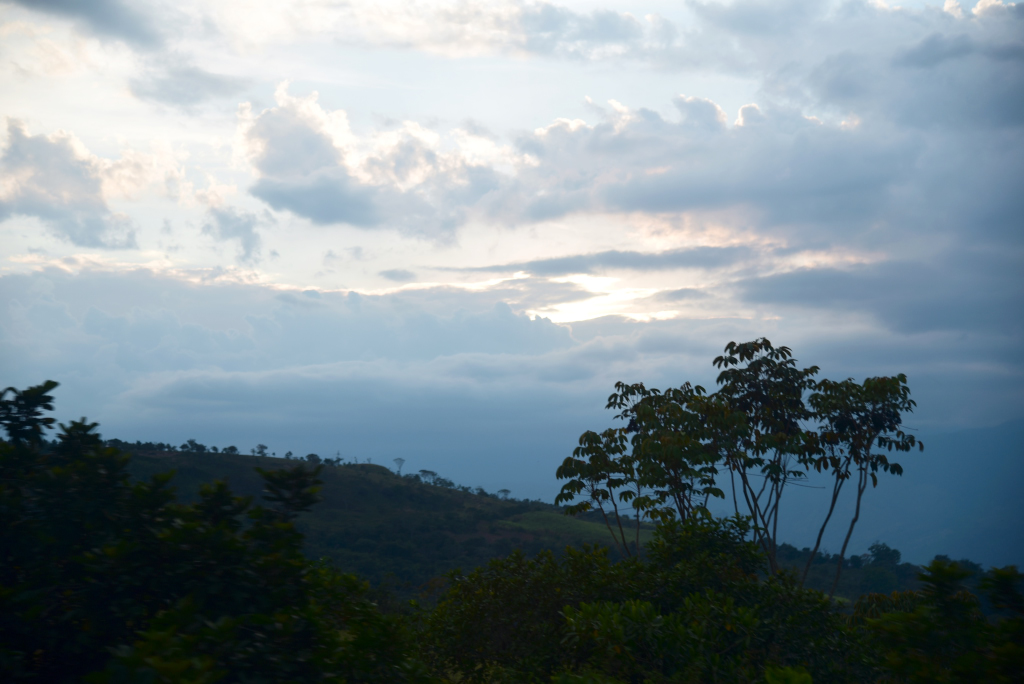February 15, 2020
I wake up early, since I have a long journey ahead of me. The sky is awash in dramatic colours, then the colours are gone. The others have been up well before me though, and in sleeping outside, there is little privacy. Irksome are the flea bites on my feet and ankles that have made the experience at the camp less than stellar. I also spent hours tossing and turning yesterday night before being able to sleep, the heat simply being too intense.
The visitors from Bucaramanga can’t resist waxing on philosophically about the state of the world as they see it, and what a fantastic escape the Cañón del Chicamocha is from the tribulations of the real world. I wouldn’t mind indulging them if I could understand more of what they are say, and if it weren’t for the fact that I am on a schedule. As it is, I will be leaving much later than I had intended, given that Paulo has booked the motorcycle taxi driver who is to take me to Aratoca for 10 am. I am incredibly indebted to Paulo, who has provided for such an incredible stay in this remote, exotic enclave in the Chicamocha canyon, and certainly can’t recommend the hospitality provided here highly enough.
When the motorcycle taxi driver arrives, I say my goodbyes, take a few more photos, and we are off. He apparently lives across the road, his father growing produce but also maintaining a land-based aquaculture of mojarra, which is apparently quite profitable. He earns extra money with guiding tourists, and following our excursion to the highway, I am somewhat saddened Paulo was not more insistent that I take advantage of the guide’s services.
We rise off a branch off the main road, most of it dirt, interrupted by paved stretches. The driver waves to friends en route, but the higher we weave, the less sign of human life we encounter, and the less land appears to be developed. Even the lower portion of the valley is relatively undeveloped, other than the occasional small plot of land. Of value is proximity to the road and the highway, but much of this land is already quite remote. The coffee and tobacco grown here are apparently of tremendous quality, but other crops would be of far less value.
The road weaves back and forth over the ridges that are set to the back of the valley floor. The driver points out the trail rising to Los Santos, as well as the general area where the trail from Villanueva drops down to the canyon floor on the neighbouring butte. We climb higher into the sky, the canyon walls coming into definition, and the river as well as the recollection of Shangri-La disappearing below us. I am confused as to the direction we are heading in, as it seems we are heading towards Villanueva, rather than Piedecuesta, although I am just getting confused by the endless hairpin turns. The trip is turning out to be a major venture, much longer than I had imagined, although it should come as no surprise that it takes a long time to climb out of the canyon.
The drier, sparser semi-arid vegetation of the valley floor changes gradually to a lusher and more florid vegetation on this side of the canyon. The main chasm of the canyon system recedes below us as we enter the secondary ravine, laden with lush vegetation, the land far too steep to warrant agriculture. A dense subtropical forest hangs off the precipices and flows downward into the deep gulley below. The driver stops to allow me to take some photos of the breathtaking vistas before we continue rising, now more gradually, through the rich canopy of native vegetation, contrasting with the spindly invasive eucalyptus and other meagre trees typically comprising the green canopy in the agriculturally developed areas of Boyacá. Brilliant orange flame trees as well as other subtropical foliage adds splashes of colour to the deep green backdrop.
It seems difficult to believe that this stunning setting is present higher up in the canyon, an entirely unique and different ecosystem from the world much further below. The driver assures me that there are incredible hikes to undertake in the area, including to the waterfall we went by. He drops me off on the roadside by the placid settlement of Aratoca, and soon I am climbing into a Libertadores van en route to San Gil. The vehicle rocks dramatically on the hairpin turns, the passengers seated around me reaching the end of their ability to tolerate being thrown back and forth, evidenced by their faces hovering near the windows, looking visibly distressed.
The focus of my attention on the bus is the older American couple apparently from Wisconsin, travelling from Santa Marta to San Gil, understandably not in the best of moods given the stresses of the long journey. Well, she isn’t, anyway, and says nothing the entire remainder of the trip. He more than makes up for it with his sly, whimsical, abrasive and subversive invective, describing vignettes of America, young Americans sowing their seed abroad in the wilds of Mexico in the day (of which I caught somewhat of a tail end in the 1980s), the trials of age, and so on.
Standing in the aisle, I hang over him, encouraging him with ribald remarks, and he is only too happy to reciprocate. In San Gil, I take them to the Hotel Casa Colonial, where they are very happy with their appointed room, then I leave, probably never to see this establishment where I spent a few bucolic days. A parting coffee at the Café La Polita, where I tell the owner of the wonders of the Cañón del Chicamocha, and he in turn tells me his excellent coffee actually comes from precisely that area.
Hugging the walls of the street running to the local bus station, avoiding the animal droppings on the narrow sidewalks, attempting to avoid getting run over and being asphyxiated by the heavy exhaust fumes reminds me why even small cities in Colombia have only so much potential for redemption. Nor is there any undiscovered romance at the San Gil bus station, other than just a patient wait for the buseta to depart to Barichara, where I need to pick up my large backpack prior to returning, then continuing to Tunja.
The microbus wends its way out of the station, then rises up above the valley San Gil is set in, higher and higher, rising to the environs of Barichara, relatively barren, uninspiring agricultural land. And yet due to the reputation that Barichara enjoys, the road into town is clogged with would-be luxury hotels whose pretensions would suffer serious constraint if the hotels were located further into town. Similarly, from all the For Sale signs, whoever owns any land in the area seems to want to cash in while the going is still good.
The return to Barichara is hardly some triumphant return, as I am here just to pick up the rest of my excessive gear, the excess consisting largely of cabling and printed matter, then need to return to San Gil to continue onward to Tunja. The Restaurante el Balcon de Mi Pueblo offers an excellent almuerzo at a reasonable price in its cavernous space, a place I was unfortunately unable to visit in the time of my initial sojourn.
The Canadian-Colombian couple I meet in the restaurant are visiting town with their friend from Toronto, and surely would have had far more opportunities to take in Barichara, considering how often they come here, but never enough, as far as they are concerned. Barichara and its environs certainly offers a civilized and bucolic life to those with the money to enjoy it, not that it is remotely expensive by Canadian standards.
The owner of the Hospedaje Don de Lorenzo is surprised to see me, but then he always looks surprised. I entertain him with my spurious chatter as I repack my things on the floor of his tienda, all too aware that time is passing, and I still have a long journey ahead of me. And no, lumbering up the steep hill back to the plaza where the bus for San Gil departs is not something I was looking forward to.
The buseta from Barichara happily continues to the main bus station in San Gil, but by the time I troll the ticket wickets for the next bus to Tunja, it seems the soonest departure would be 5 pm, disappointing, in that I had planned on leaving for Tunja far earlier. Given that the trip is four to five hours, I would again arrive late at night, which I had absolutely not wanted to do, particularly since I have to leave early in the morning for El Cocuy, and am not quite familiar with the service being offered.
A bus from Bogota arrives in the last minute, the agent for the bus company shouting at no one in particular ‘Bogota!’ and ‘Tunja’. I buy the ticket, run to the platform, and soon I am sitting in the last row of the luxury coach that would have seen better days, among the exhausted families, women with small children, seats that are collapsed that won’t return from the reclined position, blank stares, and the persistent whiff of the toilet behind me.
One of the motives for leaving earlier was the opportunity to see the dramatic landscape of Santander unfolding before it becomes dark, but unfortunately I will be forced to take in the spectacular scenery at dusk. The bus weaves artfully along the single-gauge road, the sprawling green valleys dotted by small fincas culminating in the peaks of the distant hills, for some distance still a familiar landscape, as the heavy traffic prevents us from travelling at any speed. I have to revise my impression of towns I saw at night coming to San Gil, Socorro in particular being an example of a town that is irredeemably grim, with its narrow claustrophobic streets, run down architecture, and weatherworn populace.
The unfolding countryside becomes dramatic, although the land visible from the road is resolutely agricultural in nature. The valleys narrow, revealing steeper and more dramatic peaks. Photos are a struggle to take due to the constant rocking motion of the bus, the slightly dirty windows, the diminishing light and the continuous screen of grasses, trees and houses that line the road.
The bus arrives in Tunja far later than I would have hoped, and Tunja is far from redeeming at night, above all the area of the bus station. Moreover, as I am summarily dropped off at the station in the dark, the terminal is actually closed. It’s barely 9:30 pm and the terminal is closed? That is ridiculous! I am supposed to travel to the remote region of northern Boyacá early tomorrow morning with the single bus that leaves for the area, but now have no way of verifying the departure time. My stress levels build …
Throwing the packs on my weary back, I climb up the steep cobblestone streets towards the plaza where I remember the historic Hotel Casa Real was located. One block too high, and I have to descend another block, past the few leering stragglers, suspicious police, and generally dark and depressing environment of nocturnal Tunja. The hotel turns out to be far from the romantic enclave I imagined it to be from my prior daytime visit, the initial impression of the lobby and the somewhat unfocused large courtyard transforming into somewhat dour rooms with four-poster wood beds, high ceilings and tiled floors, in former times perhaps rich in character, but now weary and somewhat run-down. It is chilly, there is of course no heat, and the wifi barely works. The mattress is rock hard as well. The receptionist does her best to accommodate me, allowing me to write in the even colder courtyard, where the wifi is good, but then her extension cord seems to come unfastened, leaving my battery to die.
My legs feel incredibly cramped due to sitting on buses so long, following the long hikes I took in the Cañón del Chicamocha. My feet are covered in the irritating flea bites I got sleeping outside yesterday night. I am actually surprised my legs, feet and shoes held up on these treks. Unfortunately, I won’t be able to rest much tonight, as it is already quite late, and I have to get up early tomorrow morning to continue on what will turn out to be an even more remarkable adventure …

